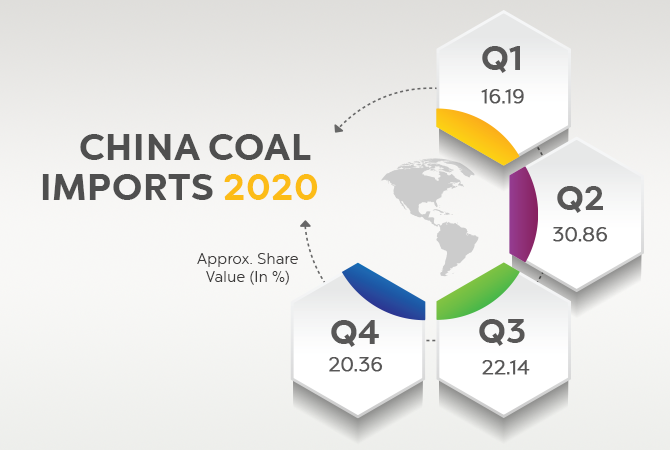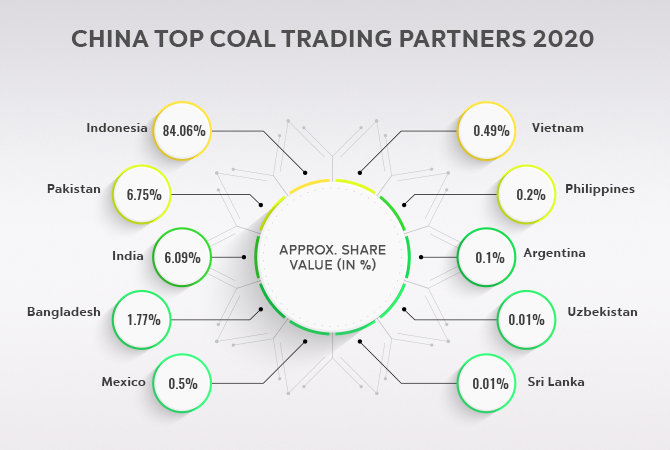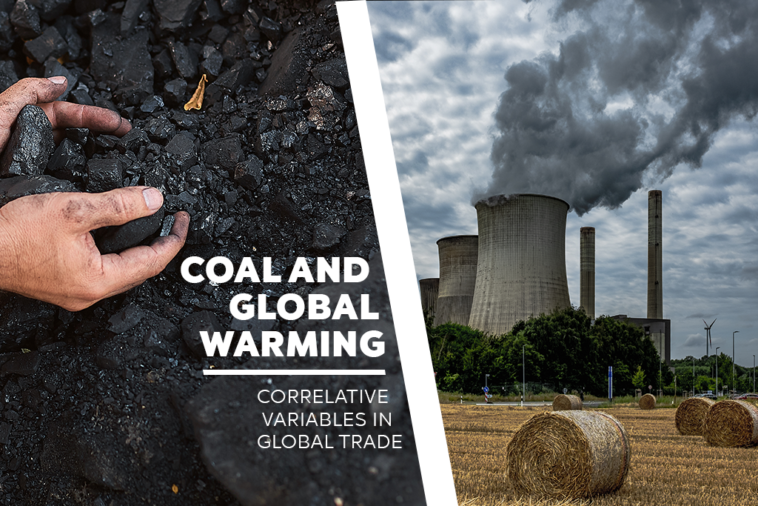Coal is the biggest of all three fossil fuels, contributing to greenhouse gases (GHG) emissions. Non-renewable energy sources namely coal, oil, and gas, as their name suggests, cannot be replenished and, ironically, supply more than 80% of world energy.
According to a report of the World Bank, coal alone contributed to more than 70% of the whole energy sector’s harmful gases emissions in 2010. Reports suggest that the high power of burned coal to generate electricity indirectly contributes to high CO2 emissions in the environment. It emits more carbon dioxide than any other fossil fuel, even two times more than natural gas.
Coal Consumption and Production
According to the International Energy Agency (IEA) reports, China was the only country that received an uptrend growth in the consumption of coal. China consumption of coal grew 56% in 2020 despite the significant reduction in the demand for coal in industries and factories. China coal imports 2020 is shown below in the China import data from our trade intelligence. Each quarter’s corresponding share value for coal is given in approximate percentages, representing the coal accounts in China’s total trade for the year 2020.

Global consumption of coal decreased by 3.1% in 2020, primarily due to the COVID-19. However, coal consumption has tended to increase due to increasing demand in the energy sector. Only about 200 coal plants are left in Europe, as per Environmental Law Charity, ‘ClientEarth’.
Coal production begins from the extraction of resources from the earth’s core. Surface mining and mountaintop removal are the extraction processes for coal mining. Mountaintop removal affects the larger portions of a mountain range and causes several harmful toxins of mountain’s valleys to merge with the general water bodies around and harm the aquatic wildlife.
Coal Trade and Management
Coal consumption and coal trade are inversely related to each other. It seems from the observation that top producers of coal are also the top importers of coal. Most populated countries like China, India, and the USA are sequentially top producers of coal.
Noticeably, the same top producers of coal are countries that require the most coal for meeting domestic demand. Therefore, the extraction of coal uprises and ‘arrangements’ are bolstered dramatically. India’s infatuation with coal is pretty evident in the infamous ‘Coal-gate Scam’.
The aforementioned IEA reports on World Energy Statistics 2020 mentions that China is the largest producer of coal in the world, with a 49.7% share of the world’s total coal production. While region-wise Africa ranks at the top of the coal-producing regions in the world, China is the biggest producer of coal country-wise in the world. Below is China export data representing the approximate share value of total coal exported in each country in percentile for the year 2020.

Production Gap Report, a part of the United Nations Environment Programme (UNEP), claims that governments of G20 countries contributed $233 billion to promote fossil fuel production. Contrarily to this amount, only $146 billion was contributed to the alternative energy sources and energy efficiency along with low-carbon alternatives such as cycling and related systems.
Curb Coal
The U.S. Energy Information Administration (EIA) sites several measures to reduce coal’s impact on the environment, which includes reducing the pollutants released, and removing impurities from coal. This consists of the usage of different technologies, equipment, and methods to control the harmful emissions of coal burnt while emphasising reuse & recycling.
Modification of trade policies and providing subsidies or setting tariff reductions on environmental goods and services are some legal measures authorities can take.
Curating a regulated framework of ESG, cooperatively with CSR initiatives, illustrates a strong viewpoint on prioritising the reduction of coal burnt to produce energy. Corporations and governments collectively can bring measures to introduce new legislation and technologies to provide aid for ‘curb coal’ initiatives in major cities or major developing countries that are top producers of coal.




